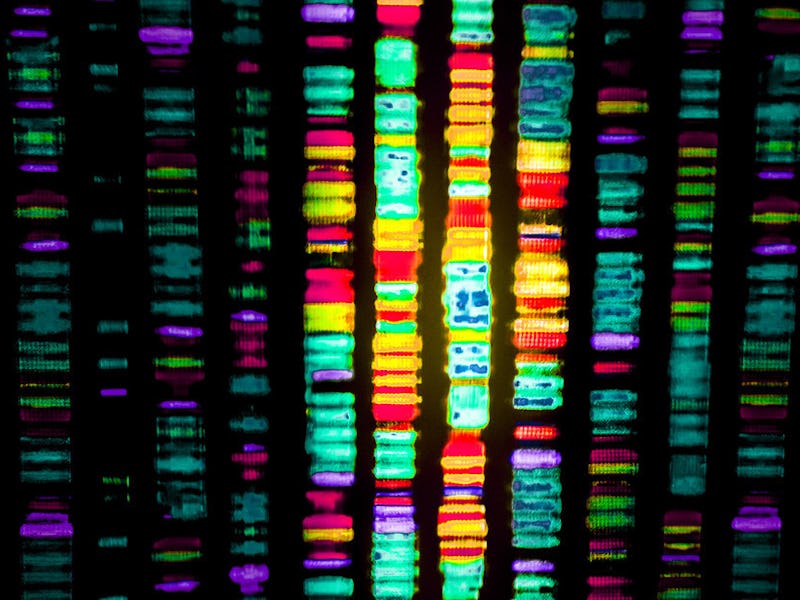In 17 Years, the Human Genome Sequence Has Become a Billion-Dollar Industry
It's caused a lot of trouble along the way.

The human genome celebrates its 17th birthday this Thursday. On February 15, 2001, the Human Genome Project published its first set of results in the journal Nature, forever shifting the way we understand human life.
In the 17 years that have passed since the seminal paper was published, that newfound understanding has led to one big realization about the human genome: It’s worth a lot of money. The proof is all around us, with companies making some serious bank on our curiosity about the secrets hidden in our genes.
An analysis by Grand View Research in 2017 suggested that the market for targeted DNA/RNA sequencing could be worth $15.9 billion by 2025.
Personal genome sequencing — think 23andMe — is especially big. You can send in a cheek swab to get your genotype analyzed, and the same company that provides that service could even sell your genetic information. DNA sequencing has even made its way into our dating lives, with start-ups like Pheramor claiming your genes can be used to find your perfect mate. Meanwhile, doctors are realizing the potential of using patients’ genetic information to assess disease risk and develop precision treatment plans, and advanced gene editing technologies are advancing a future where we can modify the human genome itself.
But, also to no one’s surprise, this increasingly cramped space has generated a lot of controversy, both financial and ethical.
The first human genome (which wasn't even quite complete) was published on February 15, 2001.
The technology’s financial potential was apparent from the get-go, just as it was clear that privacy would be a major roadblock to making the technology lucrative. In the early Aughts, the government-funded International Human Genome Sequencing Consortium wasn’t the only group working on this project: Celera Genomics, founded by controversial geneticist Craig Venter, led the private industry effort to sequence the human genome, causing an uproar in the scientific community by circumventing privacy controls while doing so. Inverse previously reported on the friction this caused:
Celera’s interests butted up against those of the National Institutes of Health (NIH), where government-funded researchers were working to do the same under the Human Genome Project. Whereas the NIH project aimed to yield a publicly available map of the human genome, Celera’s data were meant to be available to paying customers only. Venter proposed to patent a large number of genes, which drew strong criticism from his peers at the NIH and beyond.
The debate over who owns genetic information still remains the biggest issue for anyone trying to make money off the human genome.
Scientists have used CRISPR-Cas9 to edit gene expression
Fortunately, some protections have been established to protect personal privacy while lawmakers and ethicists work out the kinks. Since a person’s genome can tell you a lot about them — their risk of developing genetic diseases, for example — lawmakers responded to scientists’ recommendations and made it illegal for employers and health insurers to discriminate against someone for the information contained in their genome by passing the Genetic Non-Discrimination Act in 2008. This law serves a dual purpose: It protects people’s right to not have their genetic information used against them, but in doing so, it also encourages people to continue contributing genetic samples for medical research.
Today, those samples continue to pour in through DNA sequencing companies small and large, and it remains unclear who can claim ownership over the resulting data. As the value of those data sets grows over the next 17 years, we can be sure the fight will be a fierce one.